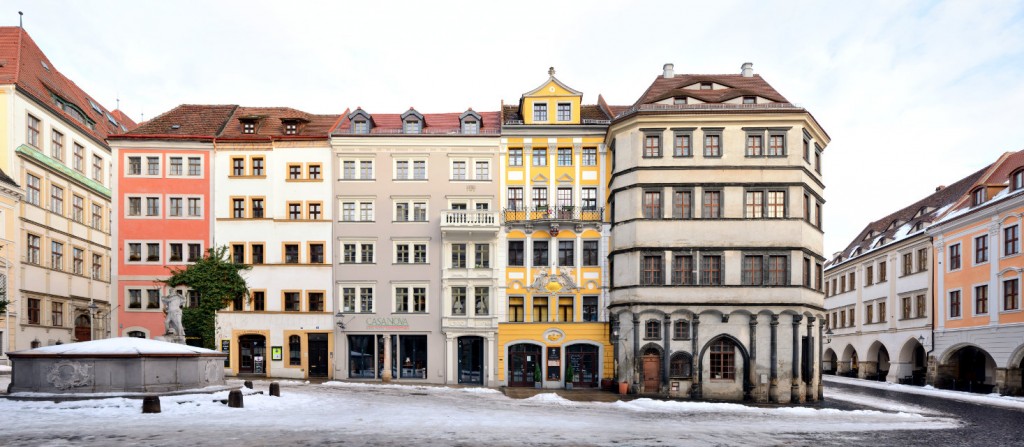Görlitz [polish: Zgorzelec], first mention as Goreliz in 1071. It is the easternmost city in germany, lying about 80 km east of Dresden, 120 km west of Wroclaw (Breslau) and 120 km north of Prague. Görlitz is the 6th largest city in the german state Saxony and the largest within the region Upper Lusatia (Oberlausitz).
Population: 55.000 [2015] | 72.000 [1990] | 94.000 (1930) | 81.000 [1900]
Görlitz is especially known for its well preserved old town, it is member of the working group historic cities in germany. From its early times the city belonged to the bohemian kingdom, later it became part of Saxony, then Silesia (in Prussia) and finally Germany (incl. GDR). It was a strong trade city in late medieval times, esp. due to its monopoly for woad trade in Bohemia. Görlitz was a member of the Lusatian League and as such held rights similar to free imperial cities for some time. In 1945 the new border between Germany and Poland cut through the city along the Neisse river. It’s eastern part is now an independent city – Zgorcelec in Poland. Economically the city has a long history in the production of trams and trains. Nowadays the city is also a favourite spot for big movie productions, earning it its nickname Görliwood.
The street front above is a section of Augustastrasse, a street full of examples of historicism style, which is common in the areas around the old town centre. Görlitz is also known as a so called Pensionopolis, an attractive city with relatively low rents that attracts the elder and retired people. While the city experienced an economic decline since 1990 it still managed to restore the majority of its historic buildings – in large parts thanks to the anonymous Altstadtmillion (old town million). Between 1995 and 2016 each year the city received an anonymous amount of one million Deutsche Mark (later that amount in Euro) to be spent for reconstructing the old town. The results can be seen all over Görlitz.
Click for larger view:
For classic view and more infos about the place (german here):
We documented more streets and places in Görlitz. Find some previews below. For more views from saxon cities follow the link to our Saxony archive.
A panorama of the central block on the lower market square (Untermarkt).
The Brüderstrasse between Obermarkt and Untermarkt with the Silesian Museum (left).
A section of the Obermarkt (Upper Market) from 2011.
The main station.













